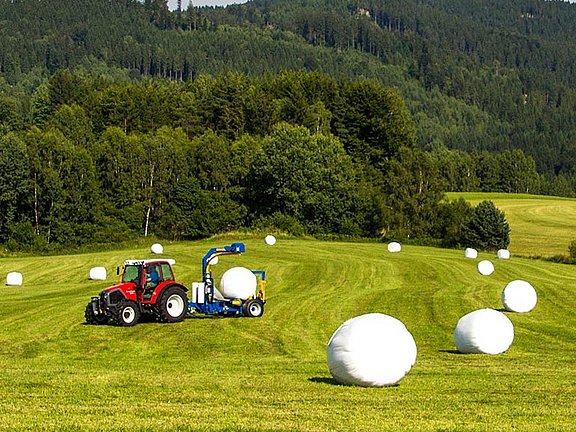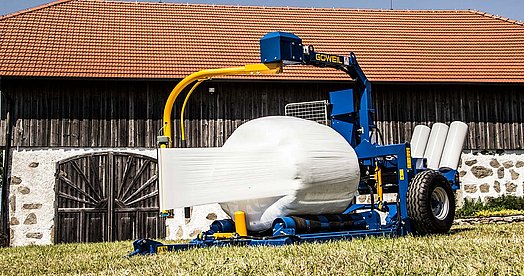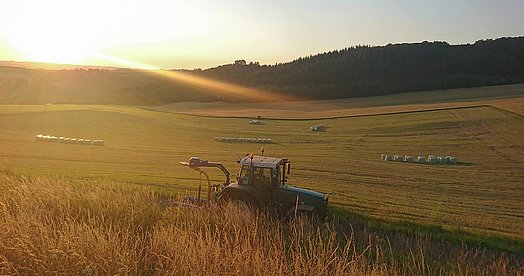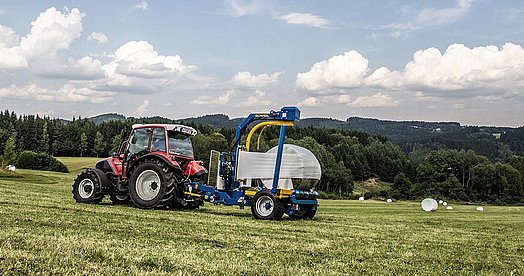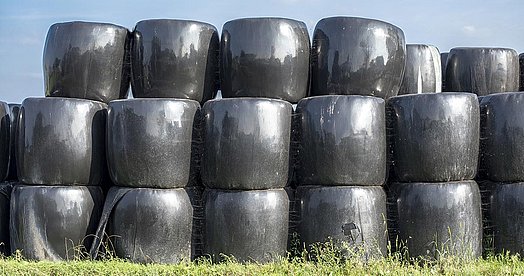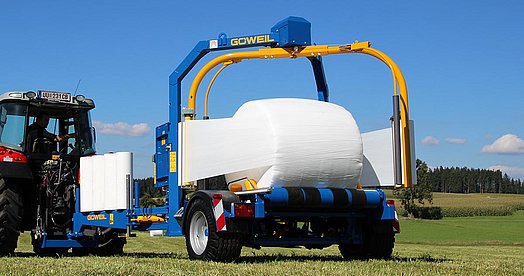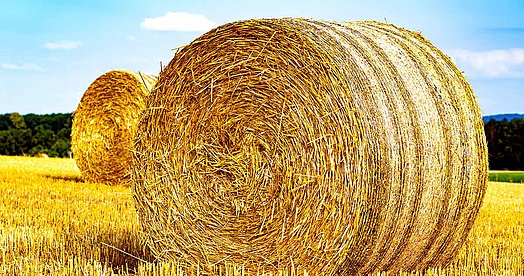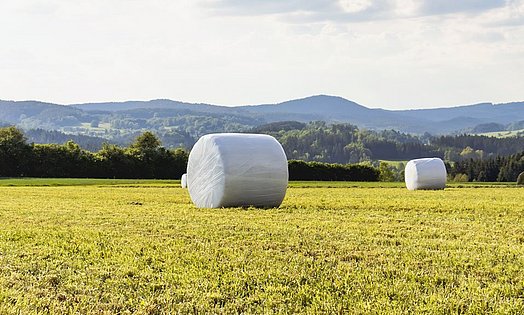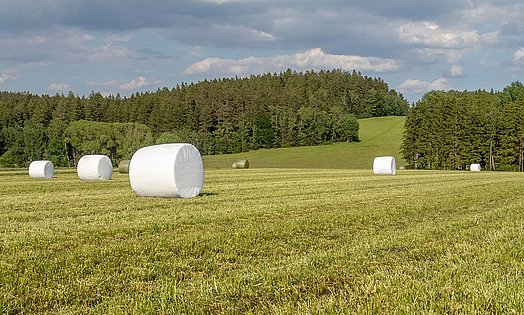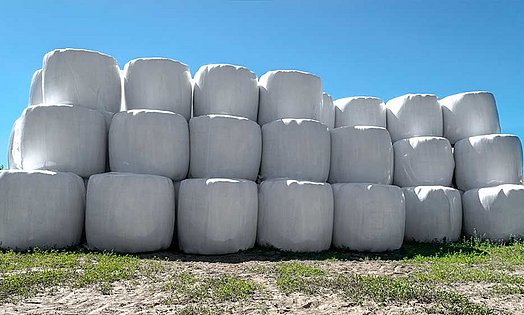Good wrapping is half the battle when it comes to silage!
Wrapping the bale properly is a key factor in the quality of bale silage.
In addition to compacting the feed to a high degree, choosing the right material as well as high-quality netting / net replacement film and wrapping film are instrumental to producing silage of the best possible quality.
Netting and net replacement film
After it has been shaped, the compacted bale is wrapped in netting or net replacement film.
The wrapping process should cover the entire width of the silage bale. The primary purpose of the net is to keep the bale in shape until it is wrapped. Resistance to tearing and puncture are the basic requirements the net has to possess. The net also needs to have a good structure to allow the layers of the netting to mesh together perfectly, which gives the net its ability to keep the bale stable.
Meanwhile, bales bound with film are significantly more compact and stable. We already explained the advantages of this net replacement film in a previous report.
Net replacement film: the future of round bales?
Wrapping film
The film is mainly responsible for ensuring a perfect exclusion of air, allowing for a proper fermentation process. To achieve its objective, the film must protect the silage bales from such external influences as weather conditions as well as animals or mechanical damage.
Available in a multitude of different grades from a large number of manufacturers, stretch film is most commonly made up of polyethylene with a thickness of approx. 25 µm and an incorporated adhesive. The release of this adhesive requires that the film be stretched to 50-70 %. To keep the film from slipping, you should observe an overlap of approx. 50 %.
The market for films has expanded into a large selection of colors, but colors should be selected with care. In many regions, the authorities already designate which colors fit into the landscape and, thus, make this colors permissible for use. Our recommendation is to opt for bright colors as they reflect sunlight more effectively, keeping the feed from overheating.
If too great, temperature fluctuations may lead to condensation, lowering the DM concentration and causing a negative effect on the quality of the feed.
Another aspect to factor in is the UV resistance of the film as the UV rays of sunlight affect the plastic, causing it to become brittle and permeable to oxygen.
How many layers of netting and film
The quality of the net / film plays a major role in determining the number of necessary layers. Also important is to account for the fact that different species of plants exert different pressure levels on net and film - another factor that impacts the number of layers needed.
The general recommendation for grass silage is to use 2.5 – 4 layers of netting. An important factor here is whether you are using a round baler or a baler-wrapper combination.
Since exerting substantially greater pressure on the net, straw or coarse-stemmed material such as maize requires at least 4 - 5 layers of netting.
Considered as standard for wrapping film are 6 layers of film. Coarse-fibered silage material with a high DM concentration such as baleage should be wrapped in no less than 8 layers of film.
Make sure to add two more layers of film if the bale will be moved and transported with increased frequency.
To achieve the best possible result, it is imperative that you read and follow the specifications provided by the manufacturer.
Any further questions?
Your personal partner will be happy to advise you on the topic: Contact now
